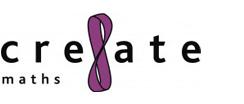KS2-Structures
This list supports learning about structures including packaging, sculptures, buildings, bridges and planes with 7-11 year-olds. There are lots of ideas for developing skills used in D&T through focussed practical tasks, so children are able to apply these techniques to the designs that they make. The resources provide opportunities to explore different structures looking at the materials they are made from, how they are joined together and how strong they are. There are a range of authentic contexts for children to design, make and evaluate their own designs and made any modifications they feel are needed to make them suitable for the purpose and audience that they have been designed for.
How to draw a plan view in maths
Different types of drawing are used to communicate different types of information. Plan views see a section of an object as projected on a horizontal plane. In effect, a plan view is a 2D section drawing viewed from the top – this is different from a top view, which would see all of the features looking down from above. In the case of a room, for example, a plan view may show table tops, chairs, doors etc., whereas a top view would also show the legs of the tables, light fittings etc.
Plan views are widely used to show rooms or buildings from above. They may include measurements, furniture, appliances, or anything else necessary to the purpose of the plan. Plan views may be used to see how furniture will fit in a room, for example when designing a new kitchen, to show the builders the layout of a new building, or on estate agent’s literature to give potential buyers an indication of what a house is like.
Producing a plan view develops drawing skills, whilst simultaneously allowing concepts such as dimensions, proportion and scale to be introduced in a practical context.
In this activity learners will produce a plan view drawing of their classroom, working in proportion and ideally to scale.
Exploded Views
This resource focusses on drawing exploded views of products and is usual throughout D&T at primary level. Different types of drawing are used to communicate different types of information. Exploded views show how the component parts of a product relate to each other. These are widely used to support the assembly of products, for maintenance activities and when building flat pack furniture at home. Producing an exploded view develops drawing skills, whilst simultaneously allowing concepts such as dimensions, proportion and scale to be introduced in a practical context.
In this activity learners will produce an exploded view drawing of a pen, working in proportion and ideally to scale. This could be used as a one-off activity, an extension to maths learning on scale, or linked to D&T activities such as product analysis or section drawing. This could be adapted for use with any D&T project once children understand waht an exploded view is and how it helps them with designing their own products.
Stronger structures experiment
This resource focusses on testing how well different shaped structures perform under load and thinking about how they can be made even stronger.Children construct card models of a cuboid, a triangular prism and a cylinder. They place loads on each to see which is the strongest and record their results. They will learn about ways that structures can be strengthened and apply these to their models. Once children have learnt techniques for strengthening these shapes, they can apply this when designing nad building their won structures in wider work within this topic.
Spaghetti structures
This activity could be used in Key Stage 2 provides a focused task to develop skills in the use of the glue gun, and it could be used as an introduction to a design and make project, such as with spaghetti towers or bridges. In this activity children develop both their skills in using a glue gun and demonstrate their understanding of how structures can be reinforced, by making a structure from spaghetti.
Bridges and Structures
This activity sets a challenges which require children to be constructive, creative and think strategically about simple structures. Working in groups children create structures from a single sheet of A4 paper, the tallest free-standing tower and the longest possible span between two end supports. They then have to decide upon the best design, giving the opportunity for them to discuss which criteria to use for awarding marks.
A Fine Balance: Building a Hanging Sculpture
This resource links to work on the forces and balance with children building and testing sculptures in small groups. The first lesson introduces the task with an introductory story, in which an artist asks an engineer to help in the construction of a hanging structure for a school assembly hall. Children investigate the properties of a hanging sculpture and are confronted with the challenge of how to construct a balanced sculpture with multiple tiers. In a second lesson they explore the properties of forces, balance, centre of gravity and counterbalance. In lesson three they apply their knowledge of forces to design and build a balanced hanging sculpture. The main focus of the final lesson is on evaluating the development and construction of the balanced hanging sculptures and suggesting improvements to the products and processes involved.
Bridge Building
In this activity children are challenged to build a bridge 50cm wide to support the weight of a food tin. They must do this using only drinking straws, tape and string. First they investigate different shapes to find out which will be better at absorbing load. They then design and create their bridges and test them out.
Welding with Chocolate
This activity, from The Welding Institute, gives students the opportunity to build structures made from chocolate. In the example given, a box-section is compared with a flat plank of chocolate, to see which is the strongest when spanning a gap. The structures are readily related to the context of bridge-building. Students join flat pieces of chocolate using 'welds' made by melting the chocolate using a bottle of hot water. The activity is simple and can be used to demonstrate ideas such as the strength of structures, welding, melting, reversible change, strength testing and the properties of materials. It is suitable for primary and secondary school students. The complexity of the task, and the structures built, can be readily tailored for individual groups.
High Flyers: Building a Glider with Everyday Materials
This project provides a great opportunity to explore forces and flight and apply their knowledge through a practical challenge. Children work in teams to investigate materials and then design, make and test their own gliders.
Unit 3A Packaging
This resource looks at packaging, its design and uses, with children asked to design and make packaging for a light bulb. It allows time for children to explore what packaging is and the requirements of different types of packages. It also let them practise skills including drawing, folding, scoring and cutting.
During the activity, children:
* Look at different types of light bulb packaging.
* Consider the need for packaging.
* Look at the packaging when it is folded out into a flat sheet.
* Design and make a package for a light bulb using a cut and folded flat sheet of card.
* Add surface decoration to their packaging.
* Evaluate their design.
How Will You Store Your Favourite Things?
One of the units from the Nuffield Primary Solutions in Design and Technology. Children design and make a container that can hold one or two favourite small items safely. They identify one, or a few, small items that are precious and to make a suitable 'treasure' box. From its appearance, the container reflects the importance and nature of the contents.
Amazing Triangles - Science
Aimed at primary level, this resource looks at building three-dimensional structures using 2D and 3D shapes. Linking to design and technology, it shows the practical application of mathematics in designing and building structures. Children observe shapes in their environment and then build cubes and triangular-based pyramids using sweets and cocktail sticks and investigate their strength. They are then challenged to build a structure that uses both triangles and squares, looking at criteria such as height or strength. It is linked to Amazing Triangles - Mathematics. This resource has been produced by Discover Science & Engineering.
DIY 3D geodesic dome project
Structures are all around us. They enable buildings, bridges and vehicles to withstand the stresses placed on them every day. Can you identify the shapes used when building and reinforcing structures? In this activity learners will make a geodesic dome from drinking straws and chenille strips (pipe cleaners). This is a challenging activity requiring teamwork and good manual dexterity. This could be used as a one-off activity or as part of a wider unit of work focussing on structures and structural systems. It could also, for example, be linked with the IET primary activity ‘stronger structures’, which involves testing the structural strength of different shapes.
Should Your Creature Be Fierce or Friendly?
Children work in groups to design and make a statue of a creature to welcome visitors to the classroom during the day. It should be large enough to create an immediate impression, stable so that it does not fall over, stiff so that it keeps its shape, strong so that it does not break easily, durable so that it lasts a long time, made from readily available and inexpensive materials, and impressive through quality of construction and finish.
Beat the Flood STEM challenge
In this resource,children apply D&T skills and knowledge of structures to help them design and build a model of a flood- proof house. Activities to help them with their design include testing materials (for strength and absorbency) and structures. Set on a fictitious island coping with the devastating effects of flooding caused by climate change.
Floating Garden STEM challenge
In this challenge children design and build a model structure that will enable farmers to grow crops even in an area that may become flooded. A floating garden, built on a base of aquatic weeds, is a cheap and sustainable way of allowing people to grow vegetables.
Bridge Bonanza
This resource contains a handy video showing teachers how to create a bridge and test its weight bearing capacity. There are example of different types of bridges and different ways to create these structures. There is a list of resources needed to create the bridges, though children can decide which materials are suitable for making their bridges, which will allow then to apply knowledge of materials and their properties and adapt these materials and shapes to develop strong bridge structures capable of bearing a set amount of weight.







